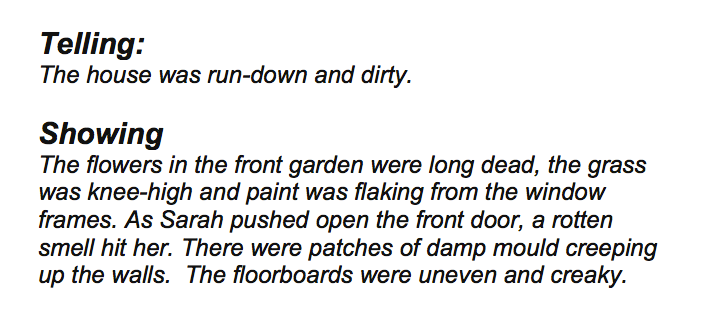Descriptive writing is what can help an author flesh out the world they are creating in their books and transport readers into fictional spaces. Some authors take a rather flowery approach to this, while others give only the necessary details. Regardless, most of the famous authors adamantly believe in the concept of “showing, not telling”.
In essence, what this means is that you, as a writer, are looking to co-create with your readers. You have to establish that you respect their ability to understand what you’ve written. Therefore, leave broad statements out and instead describe characteristics or features that could explain the same thing. Describe what it feels like to be present for an event, not just as if you were being told about it. A famous example is as follows:
“Don't tell me the moon is shining; show me the glint of light on broken glass" - Anton Chekhow
In this example, Chekhow is playing off of the common knowledge that the moon reflects off of glass, and instead chooses, in an abstract or slightly indirect way, to describe the nature of the brightness or quality of the moon. The benefits of this practice is that your readers will in turn respect you as a descriptive story-teller. It is much easier to picture something when it is written with appropriate details, than if you are drowned in adjectives.

A common place that this can be seen is with emotions in writing. It is rather one-dimensional to describe the emotional state of a character such as the following:
“Jacob had taken John’s last cookie. In anger, John walked away.”
A better way of portraying this event would be to focus on details that are common in angry people. For example:
“Jacob had taken John’s last cookie. John balled up his fists defiantly and stormed out”
Here, without even mentioning the word “anger”, readers can understand the same emotion from the sentence. You don’t have to tell your readers exactly what they need to get from any sentence. They are capable of understanding this themselves.

Naturally, as with other conventions of writing, the best way to adapt this concept is to practice. Re-read what you’ve written and try to see if your descriptive sentences contain too many adjectives or too blatantly state their intent. If you locate this, try to expand and tease out the details. Real life often deals with the little things in life, since that is how we, as humans, experience them. Therefore, mentioning smaller scale actions will help the readers relate.
To summarize: be specific. Try to think of aspects of your story that you might not have thought about. In the case of the example of Jacob and John, try to dive into their motivations and see how you can expand on them as characters. If you’re writing a piece of fiction, you want your characters to come to life on the page. By showing and not telling, you can characterize them for your readers and make their actions even more meaningful.